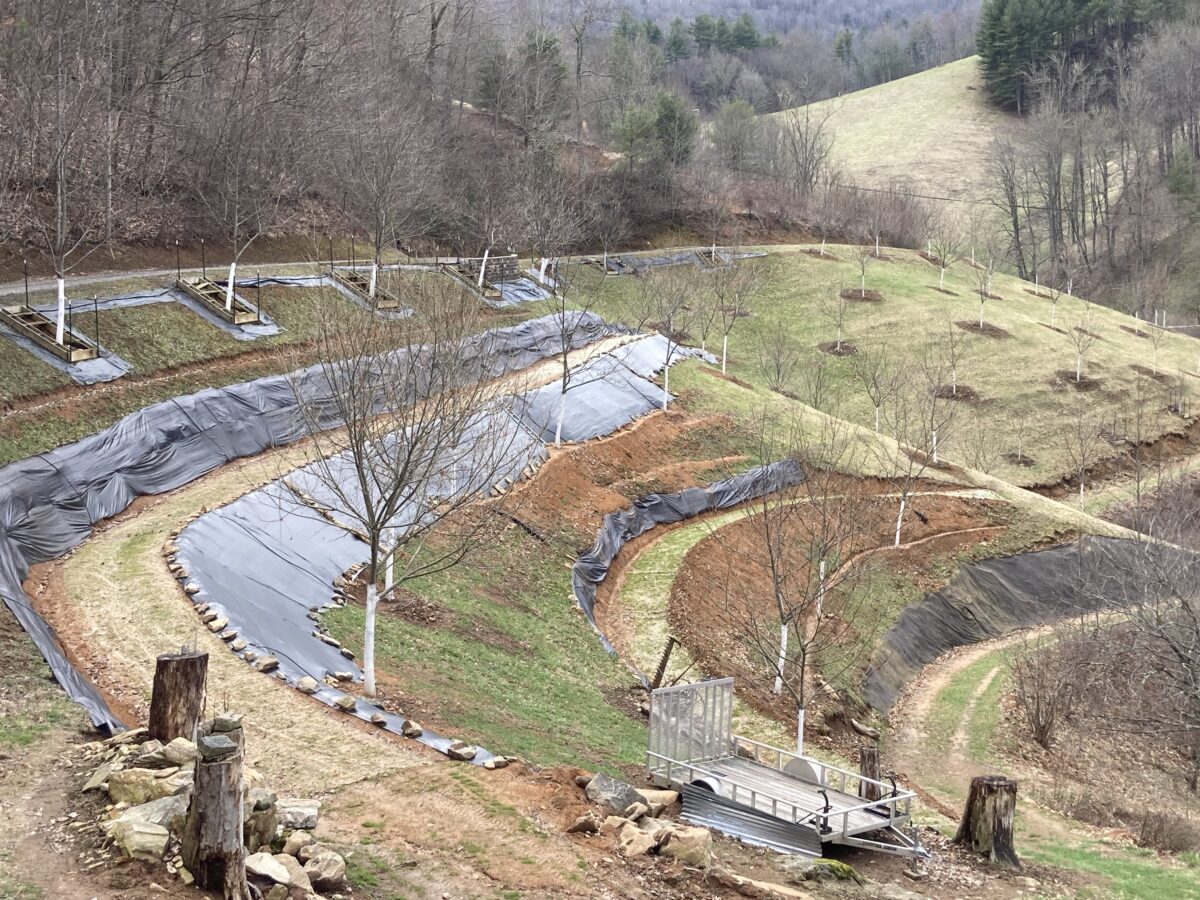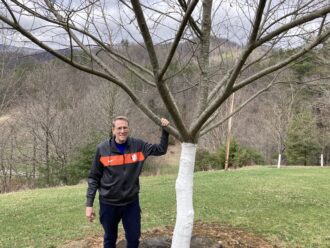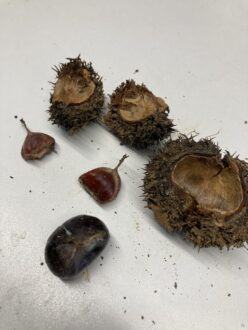BURNSVILLE, North Carolina – Ron Fritz has a vision to restore the grandeur of the American chestnut tree in Western North Carolina.
The retired food scientist turned farmer sets his gaze on the forested hillsides of the Blue Ridge Mountains outside his small chestnut orchard and recounts the stories told of American chestnut trees that dominated the landscape prior to the turn of the century, growing so big in diameter that they were called the Redwoods of the East.
Chestnut trees were harvested for their timber for furniture, building material and fuel. They were used medicinally. Their fruit – those odd-shaped shiny brown nuts revered for their sweet taste -- were an opulent delicacy. Livestock, particularly pigs, fed chestnuts were highly prized for their flavorful meat.
The area – and other communities up and down the East Coast -- relied, survived, and thrived on their existence. And then the trees were gone, tens of millions of acres from Maine to Mississippi wiped out by blight. Many consider it one of history’s greatest ecological disasters.
At Mountain Grown Chestnuts, 75 chestnut trees dotting the hillside are the beginnings of what Fritz hopes is a return to a thriving agricultural industry, and part of his work is chasing the perfect chestnut fruit.

“I want the perfect nut, one that is at its peak of sweetness and is the moistest,” said Fritz. “Sugar content and moisture are the two things that change as soon as the fruit falls off the tree.” He received a Southern Sustainable Agriculture Research and Education (SSARE) Producer Grant to create models to measure optimum sugar and moisture content of the fruit to help those in the industry determine what he calls, “the perfect moment of consumption.”
Fritz has been growing chestnuts for about a decade. He focuses mainly on Dustan Chestnut, a cross between the American chestnut and Chinese chestnut that is blight resistant. He said that consuming a chestnut at its peak is important for the customers he serves – those who purchase the fruit through direct sales (he can command $8 a pound), and those he works with in the local hotel and restaurant industries.
“It’s difficult to tell when a chestnut is ripe,” said Fritz. “If you eat it too early it tastes bland. If you eat it too late, it’s dry and not palatable. It influences consumer perception. They say, ‘Oh, it was a bad crop’. The crop is not bad. You just didn’t consume it at the right time.”

Fritz has used his expertise as a food industry global resource statistician to develop some models of optimum consumption based on studies conducted in big chestnut-producing countries, such as Japan, Turkey and China, but the findings are not entirely relevant to North America.
Through the Southern SARE Producer Grant, Fritz hopes to use his trees to come up with his own models of optimum consumption that he can share with his customers. In the study, “Characterizing Chestnut ‘Cure’ as a Function of Time, Temp and RH, Based on Nut Size, Color and Shape,” Fritz is harvesting the fruit, refrigerating them, and then immediately sending them for lab analysis to measure sugar (sucrose) and moisture content using near infrared spectroscopy at various timeframes (48, 96, and 168 hours).
He said that floor orchard management is a big key to the research. “You want to get those chestnuts up fast and into refrigeration. Temperature and humidity are the two things that drive curing. Refrigeration can stunt that curing process,” he said. “Sugar levels peak and then level off. Moisture peaks, then drops off. That’s a function of temperature.”
He also stressed that it’s important for the trees to drop the fruit naturally. “You want the fruit on the tree as long as possible so that those starches are being pumped into the fruit,” said Fritz. “You want to maximize that sweet flavor.”
The overall goal is to determine at what point the fruit is at its peak of sugar and moistness for consumption.
“I hope this study helps really pinpoint that. There’s so much variability involved with the fruit,” said Fritz. “Does size matter? Some nuts are a ½ inch, other are 1.5 inches in diameter. Does shape matter? Does nut color matter? What about the time the nuts fall from the tree? Does it matter if they drop early or late? Any combination of those could be a factor. We have a nonhomogeneous product, but we are giving a one-size fits all prescription. This research is needed to provide someone a more targeted prescription of how to prepare the chestnut in when to serve it and eat it.”
Fritz was slowed in his research last year when the late April freeze impacted fruit development which resulted in a near zero harvest. He hopes to begin his trials this year when the trees start setting fruit in August. Harvest generally begins in late September and runs for about 5 weeks.
Mountain Grown Chestnuts is run and operated by Ron Fritz and his wife Mitzie, located on 11 acres of family land on the spot of Mitzie’s childhood playground. Located in Burnsville, NC, the chestnut trees thrive in the acidic soils high up in the mountains of Yancey County.
